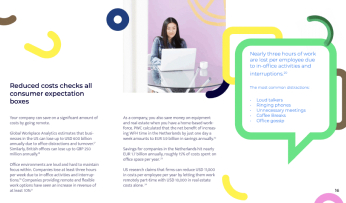Even the best of us make mistakes. But in customer service, you don’t have to make mistakes to learn from them. If you’re smart, you can get some preemptive learning in.
There are several common bloopers agents make on the job, whether new or veteran. By identifying them, you can avoid making them in the first place.
1. You sound like you’re reading a script
This happens when prioritising speed over quality. To save time, you might rely on scripted responses to the customer instead of a more conversational approach.
Your customer will notice. They could say something like, “I don’t like talking to a bot, please get me a real person” or leave a bad review.
Reading a scripted response will sound as robotic to them as it would to you. Personalise what you say and keep your ready-made responses to routine or technical information.
2. You’re under-empathising
Forgetting to apologise for a customer’s difficulties is a big no-no. Throughout every interaction, you need to show them you care.
People reach out to you when something has gone wrong.
They’ve spent time and money on your product and even more to reach you. Showing empathy is respectful. After all, they’re allowed to be angry.
Try saying something like, “I’m sorry you’re having difficulties. I understand your disappointment with this experience, and I’m here to help you the best I can.”
It’ll go a long way in making a customer feel reassured and valued.
3. You’re over-empathising
Many new agents make this mistake. The value of empathy is drilled into every customer support agent, but overdoing it makes it counterproductive.
For instance, saying, “I can understand how frustrated you must feel!” when a customer hasn’t expressed frustration can make them feel more upset than they are.
Always read your customer for the social cues they’re sending and respond intelligently. Don’t impose negative emotions on them if you can avoid them.
4. You’ve addressed a customer by the wrong name
It even happens to the best customer support agents. There’s often so much on your plate that you can be distracted or copy-pasting information to save time.
So, you’ve called your customer someone else’s name – what now?
Few things enrage customers more than being addressed by the wrong name. It can make your support effort seem neglectful and insulting.
Double-check everything you’re going to say. If you make this mistake, apologise swiftly. If you feel up to it, you can also mention the oversight was because of high call volumes.
5. You delivered incorrect information
When people reach out with an issue, they want solutions ASAP.
As a service agent, you need to actively listen, ask the right questions, and process what your customer says. Otherwise, you’ll misdiagnose the problem and waste their time.
It could also annoy them to the point of giving you a bad rating or damaging their view of your company. Our customer support life hack in 99.9% of situations is to pay attention.
If you get something wrong, apologise, and move on. If your company allows, you could also throw in some freebies.
6. You’re winging it
Winging it is a futile approach with any customer. You’re just wasting their time with ineffective action and frustrating them with no resolution.
Instead, keep your customer in the loop on the status of their issue. Even if you lack the knowledge to solve it or there’s currently no solution.
Try saying, ‘Thank you for bringing this to my attention. I’ll gladly investigate this further. Could you give me 24 hours to update you on this?”
By letting the customer know you need time, you can try and find the correct information or identify alternatives. Never disguise your lack of knowledge with a shot-in-the-dark solution.
(Shots in the dark tend to misfire.)
7. You’ve unintentionally caused offence
Sometimes, customers might end up feeling insulted through no fault of your own. Often, when asked for a screenshot as proof, customers might feel like you don’t believe them.
Whenever they’re offended, apologise immediately. Clarify that no offence was meant and that you have their best interest at heart.
Explain your stance with something like, “A screenshot ensures we can investigate precise information. Text data can lead to copy errors and incorrect statistics. We wish to avoid this at all costs to serve you efficiently.”
Do as you would have done to you
Imagine your customer as you or someone you know.
Picture a family member, close friend, or colleague you like. By approaching customers as people, you’re more likely to be empathetic and helpful.
No mistake is so great that a heartfelt apology can’t make it better. We’re all humans. Make sure your intentions are good and your purpose clear.
That’s what customer service is all about.





